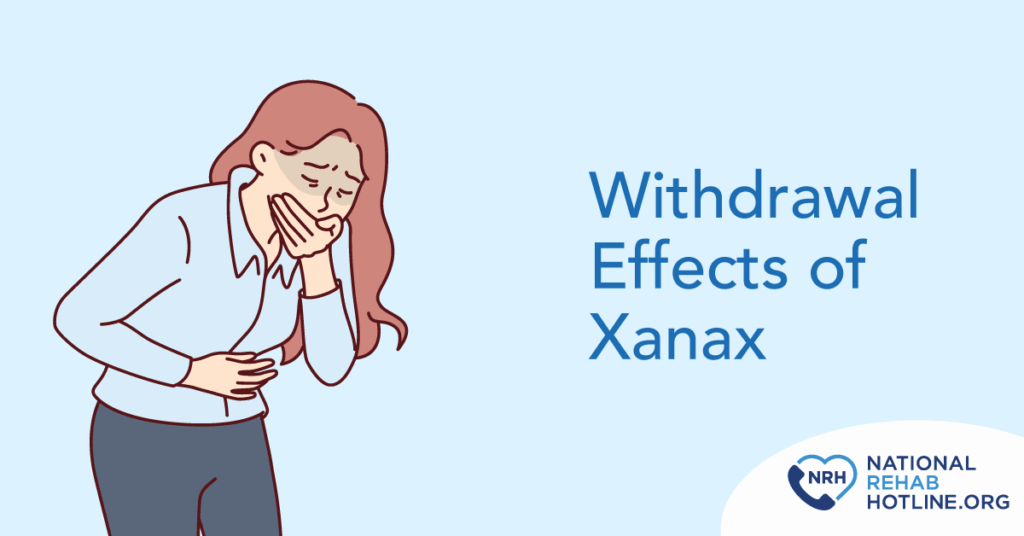Xanax, a brand name of alprazolam, is a powerful prescription benzodiazepine. Doctors primarily prescribe it to manage anxiety disorders and panic attacks. It works by enhancing the effects of GABA, a calming neurotransmitter in the brain. While effective in the short term, its use carries significant risks. Misuse or long-term use often leads to physical dependence. This means the body adapts to the presence of the drug, so stopping it abruptly can trigger withdrawal. Understanding Xanax withdrawal symptoms and how to treat them is crucial for a safe and successful recovery.
How Xanax Dependence Develops
Regular use of Xanax, even as prescribed, can lead the body to adapt. Over time, the user might feel higher doses are necessary to achieve the same calming effect. This is known as developing a tolerance for the drug, and it can cause people to take increasingly higher doses in search of the effects they experienced when they started taking it.
Xanax dependence develops when the body requires the drug to function normally. This dependence sets the stage for benzodiazepine withdrawal symptoms if use is stopped suddenly or doses are reduced too quickly. Misuse, such as taking higher doses or using it without a prescription, significantly accelerates this process and increases dependence severity.
Even taking prescribed benzodiazepines for relatively short periods can carry a risk of withdrawal symptoms. A 2025 review found that taking this type of drug every day for as little as 2 weeks could lead to withdrawal effects upon stopping. However, the severity of the symptoms experienced is likely to increase the longer the drugs have been used.
Common Xanax Withdrawal Symptoms
Stopping Xanax, especially after heavy or prolonged use, causes a range of uncomfortable and sometimes dangerous symptoms as the brain struggles to regain balance without the drug. Key Xanax withdrawal symptoms include:
- Heightened anxiety and panic attacks. Rebound anxiety during Xanax detox is often more severe than the original condition.
- Insomnia and sleep disturbances. Falling or staying asleep becomes extremely difficult.
- Physical discomfort. This includes headaches, muscle pain, stiffness, tremors and sweating.
- Sensory hypersensitivity. Increased sensitivity to light, sound and touch is common.
- Digestive issues. Nausea, vomiting and diarrhea can occur.
- Cognitive problems. Difficulty concentrating, memory lapses and confusion are frequent benzodiazepine withdrawal symptoms.
- Mood swings. Irritability, restlessness and depression commonly occur.
- Perceptual changes. Some people experience derealization (feeling detached from surroundings) or depersonalization (feeling detached from themselves).
- Seizures. These are one of the most severe and dangerous potential benzodiazepine withdrawal symptoms, especially with cold-turkey cessation.
Timeline and Severity of Withdrawal
Xanax withdrawal symptoms typically begin within 6-12 hours after the last dose. This is because Xanax has a relatively short half-life. Symptoms often peak in intensity around the second day. The acute phase, where physical symptoms are strongest, usually lasts 5-14 days. However, some individuals experience an ongoing withdrawal syndrome, which can involve lingering anxiety, insomnia and depression that last for weeks or even months.
Quitting Xanax cold turkey is extremely dangerous. Abrupt cessation drastically increases the risk of severe symptoms, particularly grand mal seizures, which can be life-threatening. During these seizures, people can lose consciousness and have severe muscle spasms. The risk of seizures is highest within the first few days after stopping, particularly if the dose was high or stopped abruptly.
In general, the severity of withdrawal depends on factors that include the duration of use, dosage, individual physiology and whether other substances were used in addition to Xanax. The important thing to remember is that no matter how long you’ve been using Xanax, support is out there to help you detox safely.
Medical Detox and Treatment Options
Due to the risks of seizures and severe discomfort, medical detox is strongly recommended for Xanax withdrawal. Xanax detox should never be attempted alone. A medically supervised detox program provides the following benefits:
- Safety. Medical professionals provide constant monitoring for complications such as seizures.
- Tapering. A doctor slowly reduces the dose over time in a process known as tapering. They might also recommend first switching to a longer-acting benzodiazepine, such as diazomethapine or clonazepam, to minimize withdrawal intensity and seizure risk. Proper tapering is the core of safe Xanax detox, and it’s difficult to get right without professional medical input.
- Symptom management. Medications and supportive care can alleviate discomfort.
- Stabilization. Detox professionals help the body adjust gradually to life without Xanax.
Following detox, comprehensive treatment for benzodiazepine addiction is essential. This treatment must address the underlying reasons for the excessive Xanax use and teach core coping skills. Options for this stage of treatment include inpatient rehab, outpatient programs, cognitive behavioral therapy and support groups. An integrated approach can significantly improve long-term recovery success.
Preventing Relapse During Recovery
Recovery from Xanax dependence is an ongoing process. Preventing relapse requires commitment and support. Here are some tips that can help you succeed:
- Stick to the treatment plan. Attend therapy sessions and follow medical advice.
- Develop healthy coping mechanisms. Learn and practice skills such as mindfulness, and engage in exercise and hobbies to manage stress and anxiety without drugs.
- Identify and avoid triggers. Recognize situations, people or emotions that increase craving risk and determine how you can avoid or deal with them.
- Build a strong support network. Lean on family, friends, therapists and support groups.
- Be patient. Healing takes time. Setbacks can happen, but they don’t mean failure. Never give up on recovery just because you had a temporary relapse. Keep working on detox and eventually you’ll succeed in freeing yourself from the harmful effects of excessive use of benzodiazepines.
Help Is Available
If you or someone you know is struggling with Xanax dependence or experiencing withdrawal symptoms, don’t hesitate to reach out. Seeking professional help is vital to ensure a safe, effective recovery. The National Rehab Hotline can connect you with resources and treatment options. Reach out to the NRH for confidential support 24-7.

